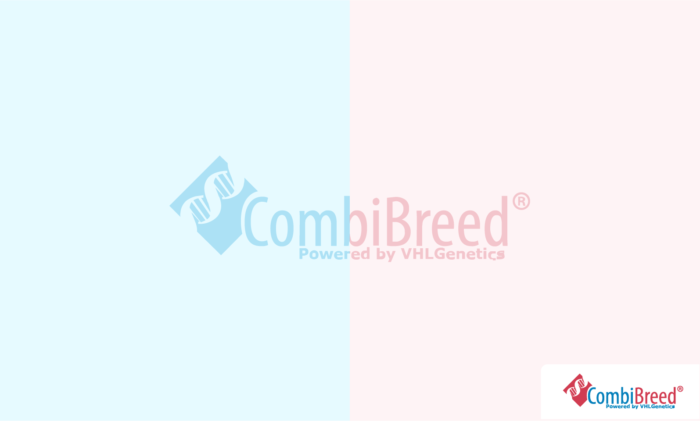
€0,- €0,- hors TVA
Only available in bundles
Coat colour in dogs is controlled by a wide range of different genes working together.
10 working days
Excl €5,95 shipping and administration per order (incl. VAT)
Only available in bundles
Caractéristiques
| Breeds | |
|---|---|
| Gene | |
| Chromosome | 5 |
| Mutation | c.233G>T |
| Mode of Inheritance | Autosomique dominante |
| Organ | |
| Specimen | Écouvillonnage, sanguin EDTA, sanguine hépariné, sperme, tissu |
| Also known as | E^G |
Informations générales
Coat colour in dogs is controlled by a wide range of different genes working together. These genes are often referred to as ‘loci’. The Extension, or E-Locus, corresponds to the gene ‘melanocortin 1 receptor’ (MC1R), which is involved in the regulation of pigment production.
This E-locus variant, designated as Grizzle or Eg, is a dominant mutation unique to the Saluki and Afghan Hound. It results in a coat colouration pattern known as ‘grizzle’ in the Saluki, and as ‘domino’ in the Afghan Hound.
Caractéristiques cliniques
Affected dogs develop darkened fur on the top and sides of the body and the outside of the limbs. The contrast between the darker hair on the head with the lighter hair on the face in a distinct V-shaped hairline pattern is often called a ‘widow’s peak’.
Additional Information
Coat colour is an intricate trait that involves a combination of multiple different genes. Testing for a range of different loci will give the most complete prediction of a dog's coat colour genetics.
Références
Pubmed ID: 20525767
Year published: 2010
Omia ID: 1495
Omia variant ID: 32